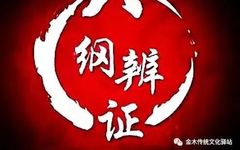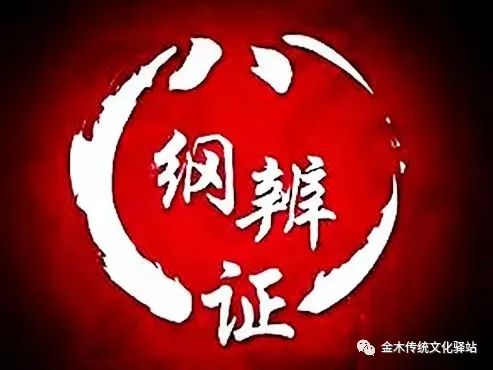
The Eight Principles of Diagnosis: A Comprehensive Overview of Disease Etiology
The differentiation of Zang-Fu organs is the core; the differentiation of Qi, Blood, and Body Fluids is clear.
External pathogenic heat diseases are differentiated by levels; assess the disease’s syndrome and type.
Eight Principles Diagnosis – Exterior Syndrome
Exterior syndrome is caused by external pathogens; symptoms include nasal congestion, runny nose, and body aches.
Fever and chills, with or without sweating; cough with white tongue coating and floating pulse.
Interior Syndrome
Interior syndrome can be transmitted from the exterior or arise internally; the disease is located deep within.
Diseases of the Zang-Fu organs, Qi, and Blood belong to the interior; all non-exterior syndromes are included.
Cold Syndrome
Cold syndrome is caused by the invasion of cold pathogens; Yang deficiency and Yin excess lead to internal cold.
Chills, preference for warmth, cold limbs, pale complexion, and loose stools.
Preference for warm drinks, pale tongue with white coating, tight and tense pulse.
Heat Syndrome
Heat syndrome is caused by the invasion of heat pathogens or results from Yang excess and Yin deficiency.
Restlessness, thirst for cold drinks, fever, preference for coolness, and a red face.
Constipation, red and painful urination, red tongue with yellow coating, rapid and forceful pulse.
Deficiency Syndrome
Deficiency syndrome indicates insufficient Zheng Qi; the body’s ability to resist disease is low.
Thin body, fatigue, shortness of breath, palpitations, spontaneous sweating, and pale tongue with thin pulse.
Excess Syndrome
Excess syndrome indicates excess pathogenic Qi; Zheng Qi is still strong enough to resist.
Rough breathing, long speech, chest and abdominal distension, refusal to be touched, and pain.
Heat, restlessness, constipation, red and painful urination, dark red tongue with thick coating, and strong pulse.
Yin Syndrome
Yin syndrome indicates closed eyes, aversion to light, quiet demeanor, and weak energy.
Preference for warmth, cold limbs, loose stools, and clear urination.
Pale tongue with white coating, deep and slow pulse; Yang deficiency and excess cold symptoms.
Yang Syndrome
Yang syndrome indicates open eyes, desire for light, restlessness, and loud speech.
Strong heat, aversion to cold, thirst for cold drinks, constipation, red face.
Red tongue with yellow coating, rapid and forceful pulse; Yang Qi is excessive, indicating excess heat symptoms.
Yin Deficiency Syndrome
Yin deficiency syndrome indicates thin body, dizziness, insomnia, dry mouth, and five hearts heat.
Red cheeks, red lips, tidal fever, thin and rapid pulse, and dry tongue.
Yang Deficiency Syndrome
Yang deficiency syndrome indicates fatigue, low energy, pale tongue, and slow pulse.
Cold limbs, preference for warmth, pale complexion, and loose stools.
Loss of Yin
Loss of Yin indicates depletion of Yin fluids; excessive sweating, warm hands and feet.
Thirst for cold drinks, weak pulse, red tongue, and dry mouth.
Loss of Yang
Loss of Yang indicates depletion of Yang Qi; excessive sweating, cold limbs, and faint pulse.
Pale tongue, weak pulse, and low energy.
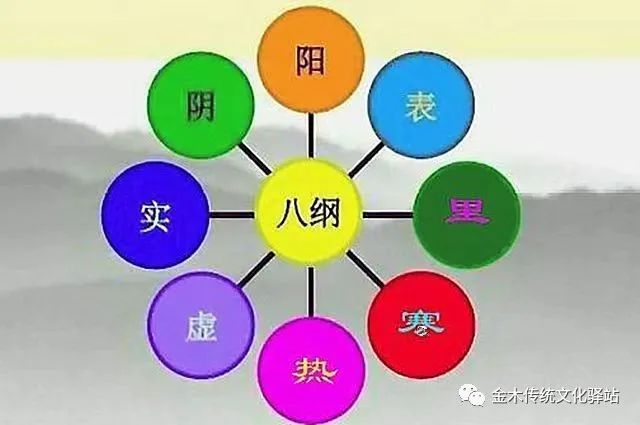
Etiology Diagnosis – Six Floating Diseases
Wind-cold causes fever, sweating, aversion to wind, throat itch, cough, and headache.
Wind-cold Disease
Pale tongue with thin white coating, floating and slow pulse; wind rash appears intermittently.
Skin itching in various places or migratory joint pain.
Cold Pathogen Disease
Exterior cold causes fever, aversion to cold wind, no sweating, and pain in the head and body.
Pale tongue with thin white coating, floating and tight pulse; nausea, vomiting, and abdominal pain.
Heat Pathogen Disease
(1) Heat Stroke
Heat stroke causes high fever, thirst, sweating, headache, and shortness of breath.
Red tongue with yellow coating, rapid pulse; may cause convulsions or delirium.
(2) Sunstroke
Sunstroke causes sudden dizziness and headache, chest tightness, nausea, and thirst.
Severe cases may lead to fainting, high fever, and excessive sweating.
Wet Pathogen Disease
Wet invasion causes heaviness in the head and limbs, poor urination, and a bland taste in the mouth.
Chest tightness, poor appetite, abdominal distension, and joint pain.
Dry Pathogen Disease
(1) Cool Dryness
Cool dryness causes aversion to cold, fever without sweating, headache, and dry mouth.
Pale tongue with thin white coating, floating pulse; nasal congestion and cough with little phlegm.
(2) Warm Dryness
Warm dryness causes fever with mild aversion to cold, dry throat, thirst, and irritability.
Red tongue with yellow coating, rapid pulse; dry cough with thick phlegm.
Fire Syndrome causes strong heat, irritability, thirst, red tongue, and constipation.
Red tongue with yellow coating, rapid pulse; may cause vomiting, nosebleeds, and skin rashes.
Emotional Disturbance Diagnosis – Joy Injury Syndrome
Joy causes Qi to disperse, injuring the heart; the spirit becomes disoriented.
Confusion, erratic behavior, incoherent speech, and weak pulse.
Anger Injury Syndrome
Excessive anger injures the liver, causing Qi to rise; symptoms include dizziness, red face, and headache.
Severe cases may lead to fainting or vomiting blood; anger leads to depression.
Chest and hypochondriac fullness, wiry pulse, irritability, and easy anger.
Worry Injury Syndrome
Excessive worry injures the lungs and spleen; symptoms include fatigue and low energy.
Poor appetite, loose stools, weak pulse, and shortness of breath.
Thought Injury Syndrome
Excessive thinking injures the heart and spleen; symptoms include poor appetite and fatigue.
Insomnia, forgetfulness, palpitations, and thin pulse.
Sadness Injury Syndrome
Sadness causes Qi to dissipate, leading to lung and heart deficiency; symptoms include pale complexion and low energy.
Weak pulse, low energy, and excessive sweating.
Fear Injury Syndrome
Fear causes Qi to descend, injuring the heart and kidneys; symptoms include anxiety and restlessness.
Frequent urination, weak pulse, and cold limbs.
Shock Injury Syndrome
Shock causes Qi to become chaotic, leading to palpitations and confusion.
Erratic behavior, disorientation, and weak pulse.
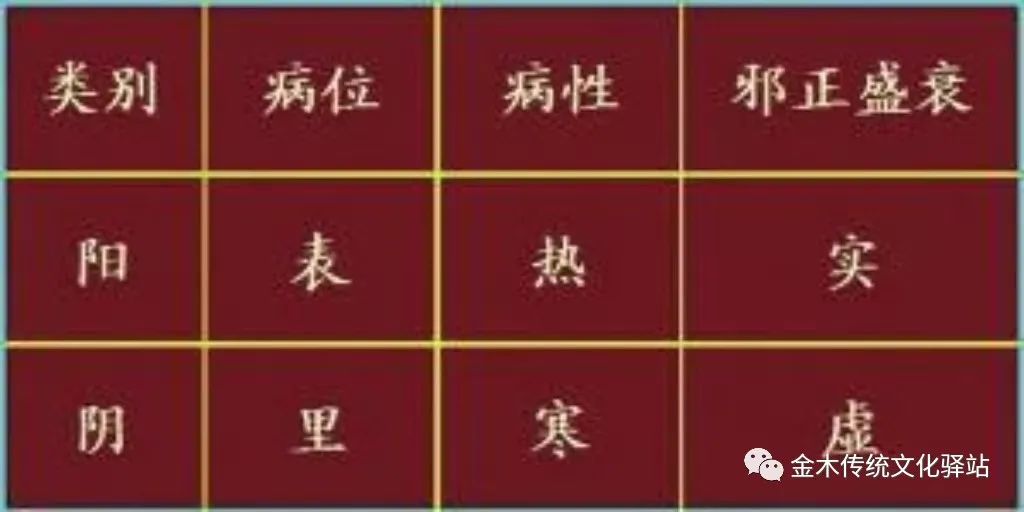
Organ Differentiation – Heart Yin Deficiency Syndrome
Heart Yin deficiency syndrome indicates palpitations, irritability, insomnia, and night sweats.
Red tongue with little moisture, thin and rapid pulse; yellow urine and constipation.
Heart Blood Deficiency Syndrome
Heart blood deficiency syndrome indicates palpitations, insomnia, forgetfulness, and dizziness.
Pale tongue, weak pulse, and pale complexion.
Heart Qi Deficiency Syndrome
Heart Qi deficiency syndrome indicates palpitations, fatigue, and spontaneous sweating.
Weak pulse, pale tongue, and low energy.
Heart Yang Deficiency Syndrome
Heart Yang deficiency syndrome indicates palpitations, cold limbs, and spontaneous sweating.
Chest tightness, shortness of breath, and pale tongue.
Heart Fire Upward Flare Syndrome
Heart fire upward flare syndrome indicates palpitations, irritability, and mouth ulcers.
Red tongue with yellow coating, rapid pulse; red face and thirst.
Heart Blood Stasis Syndrome
Heart blood stasis syndrome indicates palpitations, chest pain, and cold limbs.
Dark red tongue with stasis points, thin and choppy pulse.
Phlegm Obstructing the Heart Orifice Syndrome
Phlegm obstructing the heart orifice syndrome indicates confusion and dullness.
Slippery pulse, pale tongue with white coating, and phlegm in the throat.
Phlegm Fire Disturbing the Heart Syndrome
Phlegm fire disturbing the heart syndrome indicates confusion and erratic behavior.
Yellow tongue coating, rapid pulse; red face and irritability.
Small Intestine Heat Syndrome
Small intestine heat syndrome indicates heat in the heart and irritability.
Red tongue with yellow coating, rapid pulse; short and painful urination.
Small Intestine Qi Pain Syndrome
Small intestine qi pain syndrome indicates abdominal pain and distension.
White tongue coating, wiry pulse; pain may vary in intensity.
Liver Qi Stagnation Syndrome
Liver qi stagnation syndrome indicates chest and hypochondriac fullness.
Wiry pulse, emotional distress, and menstrual irregularities.
Liver Fire Upward Flare Syndrome
Liver fire upward flare syndrome indicates red eyes, irritability, and headache.
Red tongue with yellow coating, rapid pulse; bitter taste and constipation.
Liver Yin Deficiency Syndrome
Liver yin deficiency syndrome indicates dry eyes, irritability, and night sweats.
Red tongue with little moisture, thin and rapid pulse; bitter taste and flank pain.
Liver Blood Deficiency Syndrome
Liver blood deficiency syndrome indicates dizziness, pale complexion, and menstrual irregularities.
Pale tongue, thin pulse; flank pain and menstrual issues.
Liver Yang Rising Syndrome
Liver yang rising syndrome indicates irritability, headache, and red face.
Red tongue with yellow coating, rapid pulse; short and painful urination.
Liver Yang Transforming Wind Syndrome
Liver yang transforming wind syndrome indicates dizziness and tremors.
Wiry pulse, red tongue; may lead to fainting or stroke.
Liver and Gallbladder Damp Heat Syndrome
Liver and gallbladder damp heat syndrome indicates jaundice, nausea, and abdominal pain.
Yellow tongue coating, rapid pulse; may lead to gallbladder stones.
Gallbladder Qi Stagnation Syndrome
Gallbladder qi stagnation syndrome indicates chest fullness and nausea.
Wiry pulse, yellow tongue coating; may lead to gallbladder inflammation.
Spleen and Stomach Deficiency Syndrome
Spleen deficiency syndrome indicates fatigue, poor appetite, and abdominal distension.
Pale tongue, weak pulse; may lead to diarrhea and poor digestion.
Spleen Yang Deficiency Syndrome
Spleen yang deficiency syndrome indicates cold limbs, fatigue, and poor appetite.
Pale tongue, weak pulse; may lead to water retention and abdominal distension.
Spleen Yin Deficiency Syndrome
Spleen yin deficiency syndrome indicates dry mouth, fatigue, and poor appetite.
Red tongue with little moisture, thin pulse; may lead to digestive issues.
Cold Dampness Obstructing the Spleen Syndrome
Cold dampness obstructing the spleen syndrome indicates heaviness and poor appetite.
Pale tongue with white coating, weak pulse; may lead to diarrhea.
Heat Dampness Accumulating in the Spleen Syndrome
Heat dampness accumulating in the spleen syndrome indicates abdominal distension and poor appetite.
Yellow tongue coating, rapid pulse; may lead to diarrhea.
Stomach Yin Deficiency Syndrome
Stomach yin deficiency syndrome indicates dry mouth, thirst, and poor appetite.
Red tongue with little moisture, thin pulse; may lead to digestive issues.
Food Stagnation in the Stomach Syndrome
Food stagnation in the stomach syndrome indicates abdominal pain and distension.
Thick tongue coating, slippery pulse; may lead to nausea and vomiting.
Cold Pathogen Invading the Stomach Syndrome
Cold pathogen invading the stomach syndrome indicates sudden abdominal pain and cold limbs.
Pale tongue with white coating, tight pulse; may lead to digestive issues.
Stomach Fire Syndrome
Stomach fire syndrome indicates strong thirst, irritability, and abdominal pain.
Red tongue with yellow coating, rapid pulse; may lead to ulcers.
Deficiency of Lung Qi Syndrome
Deficiency of lung qi syndrome indicates weak voice, cough, and shortness of breath.
Pale tongue, weak pulse; may lead to respiratory issues.
Deficiency of Lung Yin Syndrome
Deficiency of lung yin syndrome indicates dry throat, cough, and night sweats.
Red tongue with little moisture, thin pulse; may lead to respiratory issues.
Wind Cold Binding the Lung Syndrome
Wind cold binding the lung syndrome indicates aversion to cold, cough, and shortness of breath.
Pale tongue with thin white coating, tight pulse; may lead to respiratory issues.
Wind Heat Invading the Lung Syndrome
Wind heat invading the lung syndrome indicates fever, cough, and sore throat.
Red tongue with yellow coating, rapid pulse; may lead to respiratory issues.
Lung Dryness Cough Syndrome
Lung dryness cough syndrome indicates dry throat, cough, and chest pain.
Red tongue with little moisture, thin pulse; may lead to respiratory issues.
Heat Obstructing the Lung Syndrome
Heat obstructing the lung syndrome indicates fever, cough, and chest pain.
Red tongue with yellow coating, rapid pulse; may lead to respiratory issues.
Phlegm Obstructing the Lung Syndrome
Phlegm obstructing the lung syndrome indicates cough, shortness of breath, and chest tightness.
White tongue coating, slippery pulse; may lead to respiratory issues.
Large Intestine Cold Dampness Syndrome
Large intestine cold dampness syndrome indicates abdominal pain and diarrhea.
Pale tongue with white coating, slow pulse; may lead to digestive issues.
Large Intestine Damp Heat Syndrome
Large intestine damp heat syndrome indicates abdominal pain and diarrhea with blood.
Red tongue with yellow coating, rapid pulse; may lead to digestive issues.
Intestinal Abscess Syndrome
Intestinal abscess syndrome indicates abdominal pain and fever.
Red tongue with yellow coating, rapid pulse; may lead to digestive issues.
Kidney Yin Deficiency Syndrome
Kidney yin deficiency syndrome indicates weakness, dizziness, and night sweats.
Red tongue with little moisture, thin pulse; may lead to reproductive issues.
Kidney Yang Deficiency Syndrome
Kidney yang deficiency syndrome indicates weakness, cold limbs, and low energy.
Pale tongue with white coating, slow pulse; may lead to reproductive issues.
Kidney Qi Not Firm Syndrome
Kidney qi not firm syndrome indicates weakness, frequent urination, and low energy.
Pale tongue with white coating, weak pulse; may lead to reproductive issues.
Kidney Not Containing Qi Syndrome
Kidney not containing qi syndrome indicates weakness, dizziness, and low energy.
Pale tongue with white coating, weak pulse; may lead to respiratory issues.
Kidney Deficiency Water Overflow Syndrome
Kidney deficiency water overflow syndrome indicates weakness, dizziness, and low energy.
Pale tongue with white coating, weak pulse; may lead to respiratory issues.
Kidney Essence Deficiency Syndrome
Kidney essence deficiency syndrome indicates weakness, dizziness, and low energy.
Pale tongue with white coating, weak pulse; may lead to reproductive issues.
Bladder Yang Deficiency Syndrome
Bladder yang deficiency syndrome indicates cold limbs, frequent urination, and low energy.
Pale tongue with white coating, weak pulse; may lead to reproductive issues.
Bladder Damp Heat Syndrome
Bladder damp heat syndrome indicates painful urination and urgency.
Red tongue with yellow coating, rapid pulse; may lead to reproductive issues.
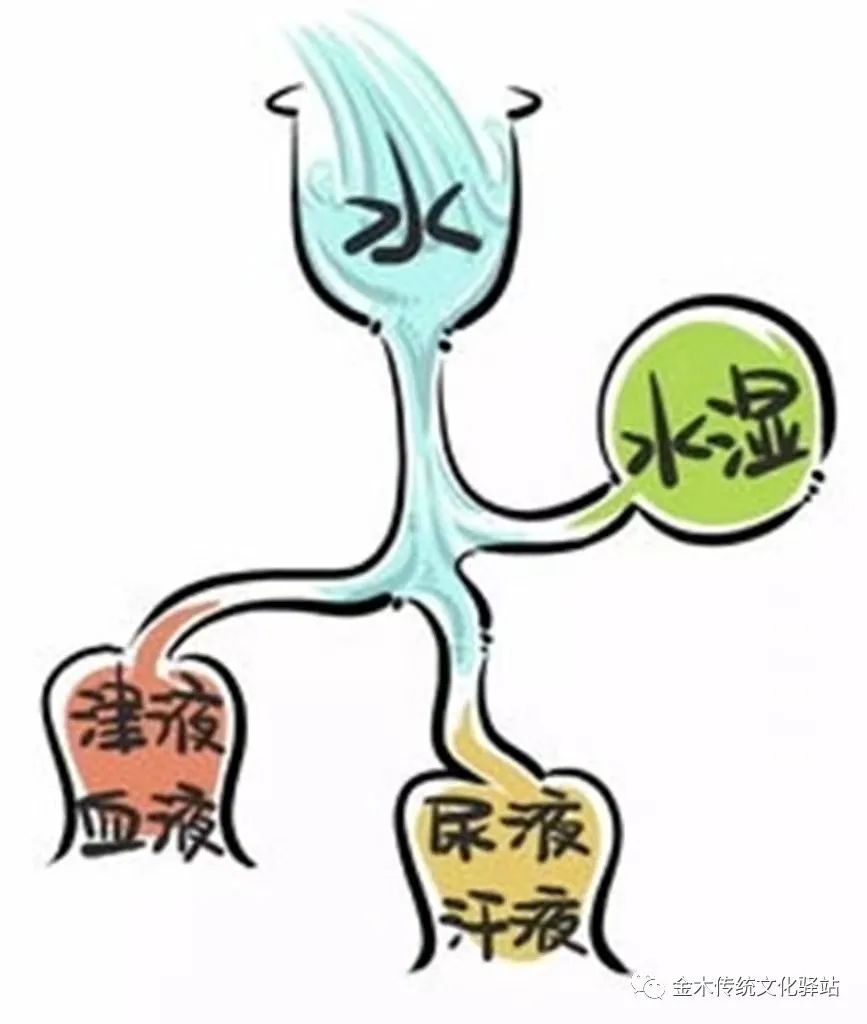
Qi, Blood, and Body Fluid Diagnosis – Qi Deficiency Syndrome
Qi deficiency syndrome indicates fatigue, weakness, and dizziness.
Pale tongue, weak pulse; may lead to respiratory issues.
Qi Sinking Syndrome
Qi sinking syndrome indicates fatigue, weakness, and abdominal distension.
Pale tongue, weak pulse; may lead to digestive issues.
Qi Stagnation Syndrome
Qi stagnation syndrome indicates chest fullness and emotional distress.
Wiry pulse, emotional distress, and menstrual irregularities.
Qi Reversal Syndrome
Qi reversal syndrome indicates nausea, vomiting, and cough.
Wiry pulse, red tongue; may lead to respiratory issues.
Blood Deficiency Syndrome
Blood deficiency syndrome indicates dizziness, pale complexion, and menstrual irregularities.
Pale tongue, thin pulse; may lead to reproductive issues.
Blood Stasis Syndrome
Blood stasis syndrome indicates pain and tenderness in specific areas.
Dark red tongue with stasis points, thin and choppy pulse.
Blood Heat Syndrome
Blood heat syndrome indicates fever, irritability, and thirst.
Red tongue with yellow coating, rapid pulse; may lead to skin issues.
Body Fluid Deficiency Syndrome
Body fluid deficiency syndrome indicates dry skin and thirst.
Pale tongue, thin pulse; may lead to digestive issues.
Fluid Stagnation Syndrome
(1) Wind Phlegm Syndrome
Wind phlegm syndrome indicates dizziness and confusion.
White tongue coating, slippery pulse; may lead to respiratory issues.
(2) Heat Phlegm Syndrome
Heat phlegm syndrome indicates cough and chest pain.
Red tongue with yellow coating, rapid pulse; may lead to respiratory issues.
(3) Cold Phlegm Syndrome
Cold phlegm syndrome indicates cough and shortness of breath.
Pale tongue with white coating, slow pulse; may lead to respiratory issues.
(4) Dry Phlegm Syndrome
Dry phlegm syndrome indicates dry throat and cough.
Red tongue with little moisture, thin pulse; may lead to respiratory issues.
(5) Damp Phlegm Syndrome
Damp phlegm syndrome indicates chest fullness and cough.
Pale tongue with white coating, slippery pulse; may lead to respiratory issues.
(6) Fluid Retention Syndrome
Fluid retention syndrome indicates abdominal distension and shortness of breath.
Pale tongue with white coating, weak pulse; may lead to respiratory issues.
(7) Suspended Fluid Syndrome
Suspended fluid syndrome indicates chest fullness and cough.
Pale tongue with white coating, weak pulse; may lead to respiratory issues.
(8) Overflowing Fluid Syndrome
Overflowing fluid syndrome indicates edema and cough.
Pale tongue with white coating, weak pulse; may lead to respiratory issues.
(9) Supporting Fluid Syndrome
Supporting fluid syndrome indicates chest fullness and cough.
Pale tongue with white coating, weak pulse; may lead to respiratory issues.
Summary of Differentiation Levels
External pathogenic heat diseases are differentiated by levels; cold and heat symptoms are assessed.
Initial symptoms indicate external disease; if unresolved, they may transmit internally.
Fever and heat symptoms indicate damage to Yin; the severity of the disease is assessed.
External symptoms are summarized; initial onset indicates superficial disease.
Different causes lead to different syndromes; differentiate between wind, heat, dampness, dryness, and cold.
(1) External Wind Cold Syndrome
External wind cold causes aversion to cold, fever, and body aches.
Pale tongue with thin white coating, floating pulse; cough with clear phlegm.
(2) External Wind Heat Syndrome
External wind heat causes fever, thirst, and sore throat.
Red tongue with yellow coating, rapid pulse; cough with yellow phlegm.
(3) External Cold Dampness Syndrome
External cold dampness causes fever, body aches, and heaviness.
Pale tongue with white coating, weak pulse; poor appetite and abdominal distension.
(4) External Heat Dampness Syndrome
External heat dampness causes fever, thirst, and abdominal distension.
Red tongue with yellow coating, rapid pulse; may lead to digestive issues.
(5) External Dryness Syndrome
External dryness causes aversion to cold, fever, and dry throat.
Red tongue with little moisture, thin pulse; may lead to respiratory issues.
Summary of Intermediary Syndromes
Intermediary syndromes indicate deep invasion of pathogens; external and internal symptoms may overlap.
Not purely internal or external; may include both.
1) Non-Internal Non-External Syndrome
Non-internal non-external syndrome indicates chest fullness and alternating chills and fever.
(Half Exterior Half Interior Syndrome)
Nausea, dry heaving, poor appetite, irritability, and bitter taste.
Pale tongue with thin white or yellow coating, wiry pulse.
2) Internal and External Same Disease
External cold with internal fluid retention causes aversion to cold, fever, and body aches.
Pale tongue with white coating, weak pulse; cough with clear phlegm.
(1) External Cold Internal Fluid
Pale tongue with white coating, weak pulse; cough with clear phlegm.
(2) External Cold Internal Heat
External cold with internal heat causes aversion to cold, fever, and thirst.
Red tongue with yellow coating, rapid pulse; may lead to digestive issues.
(3) Both Internal and External Cold
Both internal and external cold causes aversion to cold, fever, and body aches.
Pale tongue with white coating, weak pulse; may lead to digestive issues.
(4) Both Internal and External Heat
Both internal and external heat causes fever, thirst, and irritability.
Red tongue with yellow coating, rapid pulse; may lead to digestive issues.

Summary of Internal Syndromes
Internal syndromes indicate deep invasion of pathogens; the disease is located in the five Zang and six Fu organs.
Qi, blood, and body fluids are depleted; Yin is exhausted, and Yang is lost, leading to critical conditions.
(1) Pathogenic Heat Obstructing the Lung
Pathogenic heat obstructing the lung causes cough, shortness of breath, and fever.
Red tongue with yellow coating, rapid pulse; may lead to respiratory issues.
(2) Internal Heat Excess
Internal heat excess causes strong thirst, irritability, and fever.
Red tongue with yellow coating, rapid pulse; may lead to digestive issues.
(3) Heat Binding the Stomach and Intestines
Heat binding the stomach and intestines causes abdominal pain and constipation.
Red tongue with yellow coating, rapid pulse; may lead to digestive issues.
(4) Damp Heat Obstructing the Spleen
Damp heat obstructing the spleen causes abdominal distension and poor appetite.
Yellow tongue coating, rapid pulse; may lead to digestive issues.
(5) Fever with Bitter Taste
Fever with bitter taste indicates irritability and thirst.
Red tongue with yellow coating, rapid pulse; may lead to digestive issues.
(6) Bladder Damp Heat
Bladder damp heat indicates painful urination and urgency.
Red tongue with yellow coating, rapid pulse; may lead to reproductive issues.
(7) Damp Heat Dysentery
Damp heat dysentery indicates abdominal pain and diarrhea with blood.
Red tongue with yellow coating, rapid pulse; may lead to digestive issues.
(8) Strong Heat Disturbing the Heart
Strong heat disturbing the heart indicates fever, irritability, and insomnia.
Red tongue with yellow coating, rapid pulse; may lead to digestive issues.
(9) Heat Burning Yin Blood
Heat burning yin blood indicates fever, irritability, and thirst.
Red tongue with yellow coating, rapid pulse; may lead to digestive issues.
(10) Heat Invading the Heart
Heat invading the heart indicates confusion and irritability.
Red tongue with yellow coating, rapid pulse; may lead to digestive issues.
(11) Blood Heat Moving Wind
Blood heat moving wind indicates fever, irritability, and tremors.
Red tongue with yellow coating, rapid pulse; may lead to digestive issues.
(12) Yin Deficiency Moving Wind
Yin deficiency moving wind indicates dizziness and tremors.
Red tongue with little moisture, thin pulse; may lead to digestive issues.
(13) Heat and Blood Stasis
Heat and blood stasis indicates abdominal pain and constipation.
Red tongue with yellow coating, rapid pulse; may lead to digestive issues.
(14) Strong Heat Moving Blood
Strong heat moving blood indicates fever, irritability, and thirst.
Red tongue with yellow coating, rapid pulse; may lead to digestive issues.
(15) Heat Syncope
Heat syncope indicates high fever and cold limbs.
Red tongue with yellow coating, rapid pulse; may lead to digestive issues.
(16) Worm Syncope
Worm syncope indicates cold limbs and abdominal pain.
Red tongue with yellow coating, rapid pulse; may lead to digestive issues.
(17) Yin Exhaustion Syndrome
Yin exhaustion syndrome indicates weakness and low energy.
Pale tongue with white coating, weak pulse; may lead to reproductive issues.
(18) Yang Collapse Syndrome
Yang collapse syndrome indicates cold limbs and low energy.
Pale tongue with white coating, weak pulse; may lead to reproductive issues.

Conclusion: Key Points of Diagnosis and Treatment
Heart and Small Intestine Diagnosis and Treatment: Heart blood deficiency, nourishing Yin and Yang to support the heart.
Heart fire upward flare, clearing heat and guiding; blood stasis obstructing the heart.
Yang deficiency and collapse, using Si Ni San; Yin excess obstructing Yang.
Loss of Yang and collapse, using Ren Shen and Fu Zi for rescue; water and Qi obstructing the heart.
Phlegm fire disturbing the heart, using Niu Huang Qing; phlegm obstructing the heart orifice.
Small intestine heat, using Dao Chi San; small intestine qi pain, using Ju He for treatment.
Liver and Gallbladder Diagnosis and Treatment
Liver qi stagnation, using Shu Gan San; liver yin deficiency, using Yi Guan Jian.
Liver blood deficiency, using Bu Gan Yang; liver fire upward flare, using Long Dan Cao for treatment.
Liver yang rising, using Ma Huang for treatment; blood deficiency causing wind, using Si Wu Tang.
Liver and gallbladder damp heat, using Yin Chen Hao; gallbladder qi stagnation, using Ping Wei San.
Cold stagnation in the liver channel, using Huo Po for treatment; liver and spleen disharmony, using Xiao Feng San.
Spleen and Stomach Diagnosis and Treatment
Spleen deficiency, using Ren Shen and Ling Gu; spleen not governing blood, using Gui Pi Tang.
Spleen deficiency leading to prolapse, using Bu Zhong Yi Qi Tang; spleen yang deficiency, using Huang Qi and Bai Zhu.
Damp heat accumulating in the spleen, using Yin Chen Hao; spleen deficiency leading to edema, using Ping Wei San.
Stomach yin deficiency, using Mai Men Dong; food stagnation in the stomach, using Bao He Wan.
Qi stagnation in the stomach, using Chai Hu; blood stasis in the stomach, using Xue Fu Zhu Yu Tang.
Stomach fire excess, using Yu Jin; cold pathogen invading the stomach, using Xiao Feng San.
Lung and Large Intestine Diagnosis and Treatment
Wind heat invading the lung, using Sang Ju Yin; wind cold binding the lung, using Xing Su San.
Three seeds and two Chen for phlegm obstruction; Ma Shi and Wei Jing for heat obstruction.
(Wind heat obstructing the lung)
Lung yin deficiency, using Bai He for treatment; lung deficiency, using Ren Shen to tonify the lung.
(Dry heat injuring the lung)
Lung dryness, using Sang and Xing for treatment; large intestine damp heat, using Shao and Bai for treatment.
Cold dampness in the stomach, using Ling Gu; abdominal abscess pain, using Da Huang and Mu Dan Pi.
Large intestine fluid deficiency, using Ma Zi for treatment; intestinal obstruction, using Hua and An for treatment.
Kidney and Bladder Diagnosis and Treatment
Kidney yang deficiency, using Fu Zi and Jiu Wei; nourishing yin with Zuo Gui and Liu Wei.
Kidney qi not firm, using Sang and Jin; kidney not containing qi, using Qi for treatment.
Kidney deficiency leading to water overflow, using Zhen Wu and Ji for treatment; kidney essence deficiency, using Zuo Gui for treatment.
(Yin and Yang deficiency)
Yang decline and essence deficiency, using Wu Zi for treatment; spleen and kidney yang deficiency, using Si Shen for treatment.
Bladder damp heat, using Ba Zheng San; bladder blood accumulation, using Tao for treatment.
Six Evils Diagnosis and Treatment
Wind cold, using Ma Huang and Jing; wind heat, using Sang Ju and Yin Qiao.
(External cold and internal heat)
Cold dampness, using Huo Xiang Zheng Qi San; heat dampness, using Xin Jia Xiang for treatment.
Dry heat, using Sang and Xing for treatment; warm dryness, using Bai He and Sang for treatment.
Clear heat and drain fire, using Bai Hu; Huang Lian for detoxification.
Emotional Disturbance Diagnosis and Treatment
Joy injury, using Shen Yang; anger, using Long Dan for treatment.
Liver qi stagnation, using Shu Gan; excessive worry, using Liu Jun for treatment.
Thought injury, using Gui Pi; sadness, using Bao Yuan Tang.
Fear, using Zhen and Jing; shock, using Zhen and Jing for treatment.
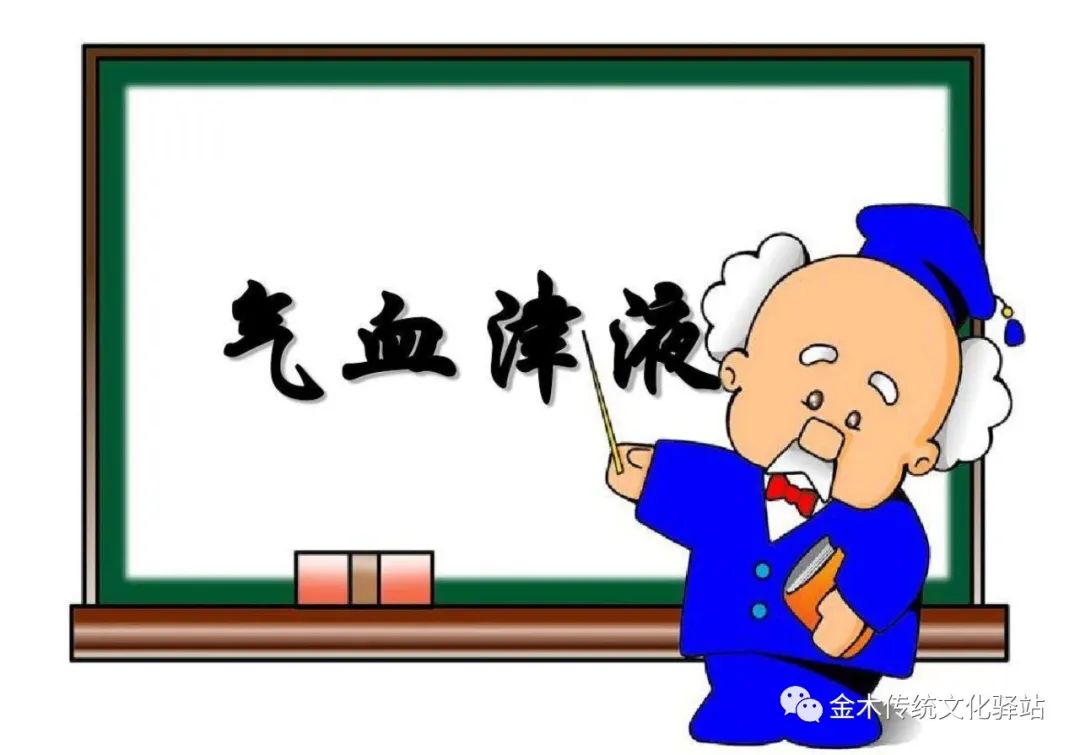
Disseminate TCM Health Knowledge, Promote Traditional Chinese Culture,Share Health Concepts, Convey Care, and Pass on Health Knowledge and Traditional Culture to More Friends…
People are great because they have dreams; we are different because we have love.
Liu Qing Ning: 186 9643 6785 or (WeChat ID)
Yang Shun Song: 138 7171 7447 or (WeChat ID)


